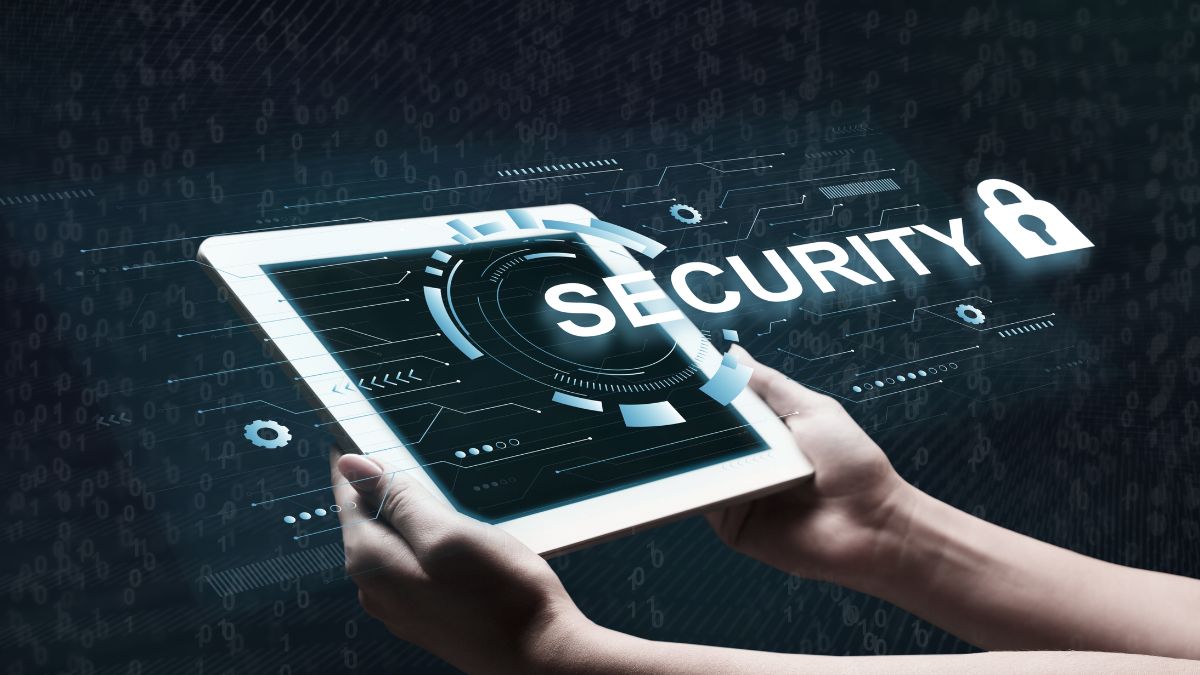With the rapid evolution of digital threats, I believe that effective IT support and managed services play a vital role in fortifying your cybersecurity landscape. Many businesses underestimate the importance of these services, often leading to devastating breaches and data losses. By leveraging expert knowledge and tailored solutions, you can significantly strengthen your security posture, ensuring a safer environment for your operations. In this post, I’ll examine deeper into how IT support and managed services can transform your approach to cybersecurity.
Key Takeaways:
- Proactive Monitoring: IT support and managed services provide continuous monitoring of systems to identify and address vulnerabilities before they can be exploited.
- Expertise in Threat Management: These services employ cybersecurity specialists who stay updated on the latest threats and implement effective strategies to safeguard organizational data.
- Comprehensive Backup Solutions: Managed services ensure regular data backups and recovery plans are in place, minimizing the impact of data loss due to cyber incidents.
Understanding the Importance of Cybersecurity
As our world becomes increasingly digitized, the significance of cybersecurity cannot be overstated. Organizations rely heavily on technology, which exposes them to various risks and threats. Ensuring the safety of sensitive data not only protects the integrity of the business but also maintains customer trust, making cybersecurity a fundamental component of any strategy.
Defining Cybersecurity
Between the vast array of potential threats in the digital landscape, cybersecurity encompasses the practices, technologies, and measures designed to safeguard your networks, devices, and sensitive information. It aims to prevent unauthorized access, data breaches, and cyberattacks that can disrupt operations and compromise data integrity.
The Growing Threat Landscape
Beside increasing complexity in technology, the range of potential cyber threats continues to evolve, creating a diversified landscape of risks. Each year, I witness new tactics and more sophisticated attacks, indicating that vigilance in cybersecurity is more important than ever.
Cybersecurity threats are rapidly changing and becoming more sophisticated. I’ve observed that phishing schemes, ransomware attacks, and advanced persistent threats are on the rise, targeting both small businesses and larger enterprises. With each innovation, cybercriminals develop new strategies, making it vital for organizations to establish robust cybersecurity protocols. This environment demands that you stay informed and proactive to protect your assets and mitigate potential damages to your reputation and operations. Adopting a multi-layered approach to security with ongoing support can significantly enhance your organization’s defenses against this evolving threat landscape.
The Role of IT Support in Cybersecurity
It is important for businesses to recognize the significant impact that IT support plays in strengthening their cybersecurity. By providing expert guidance, ongoing training, and assistance with security tools, IT support teams help you build robust defenses against evolving threats. Their expertise enables you to create a comprehensive security strategy that not only mitigates risks but also enhances your overall organizational resilience.
Proactive Monitoring and Maintenance
At the core of effective cybersecurity is proactive monitoring and maintenance. This involves continuously tracking your IT environment for potential vulnerabilities or unusual activity, which allows you to address issues before they escalate. By implementing regular updates and software patches, I ensure that your systems remain fortified against the latest threats and weaknesses, keeping your organization secure.
Incident Response and Recovery
Around the clock, incident response and recovery are paramount for minimizing the damage caused by cyber incidents. IT support professionals develop and implement strategies to swiftly address security breaches, ensuring your business can rapidly recover and maintain operations. Having a well-defined plan in place empowers you to act quickly and efficiently when faced with potential threats.
Maintenance of an incident response plan is critical for the overall security posture of your organization. When a breach occurs, rapid action can significantly limit damage, while a structured approach ensures that your team has clear guidance. This plan outlines roles and responsibilities, allowing for effective communication during a crisis. As you execute this plan, lessons learned from incidents can lead to improved defenses, fostering a proactive mentality that strengthens your cybersecurity infrastructure.
Managed Services: A Comprehensive Approach
Unlike traditional IT support models, managed services offer a more holistic strategy, streamlining the management of cybersecurity protocols while ensuring continuous monitoring and threat assessment. This proactive methodology not only addresses security vulnerabilities but also enhances overall operational efficiency, allowing your organization to focus on core business objectives without frequent disruptions caused by security breaches.
Benefits of Outsourcing Cybersecurity
With outsourcing cybersecurity to managed service providers, you gain access to expertise and resources that may be beyond your in-house capabilities. This approach often results in cost savings, as you are not continuously investing in the latest technologies and training, while simultaneously benefiting from enhanced security measures tailored to your needs.
Integration with Existing IT Infrastructure
Managed services create seamless integration with your current IT infrastructure, enhancing security without compromising productivity. This ensures that your existing systems function optimally while being fortified against potential threats.
A successful integration process is vital for maximizing your cybersecurity framework’s effectiveness. By leveraging a managed services provider, I can ensure that your existing systems, applications, and protocols are brought into alignment with modern security standards. This eliminates gaps in protection and significantly reduces the risk of potential breaches. Notably, you can achieve better security posture without the need to overhaul your entire IT environment, thus maintaining business continuity while enhancing resilience against cyber threats.
Tools and Technologies for Enhanced Security
Many businesses today are increasingly relying on advanced tools and technologies to bolster their cybersecurity posture. These solutions offer various levels of protection, from basic firewall systems to sophisticated AI-driven software that actively identifies vulnerabilities. By leveraging these technologies, you can significantly enhance your organization’s ability to prevent and respond to cyber threats, ensuring your sensitive data remains secure.
Threat Detection and Prevention Tools
To effectively combat cyber threats, implementing robust threat detection and prevention tools is necessary. These tools utilize advanced algorithms and machine learning to identify suspicious activities in real-time, allowing you to act swiftly before any harm occurs. By investing in these solutions, you enhance your organization’s capacity to thwart potential breaches.
Security Information and Event Management (SIEM)
With SIEM solutions, you gain a comprehensive overview of your organization’s security status, bringing together logs and events from various sources for analysis. This centralized approach enables you to detect anomalies, streamline incident response, and maintain compliance with regulatory standards.
Also, SIEM offers valuable insights by correlating data points and identifying patterns that might indicate an ongoing or future attack. This not only helps in providing real-time alerts but also allows for historical analysis to uncover trends over time. By integrating SIEM into your cybersecurity strategy, you empower your team with the tools they need to respond effectively to incidents, ultimately fostering a more secure environment for your organization and its assets.
Best Practices for IT Support and Managed Services
Your organization can significantly boost its cybersecurity posture by adopting best practices for IT support and managed services. This includes a combination of proactive monitoring, effective communication, and a comprehensive strategy that addresses potential risks. Staying updated with industry standards and customizing your approach based on specific organizational needs is necessary to protect valuable data and resources.
Regular Security Assessments
Behind every robust cybersecurity strategy lies the necessity for regular security assessments. Conducting these assessments helps identify vulnerabilities and weaknesses in your systems, ensuring that any potential threats are addressed promptly. These evaluations not only enhance your overall security posture but also instill confidence among stakeholders and clients in your organization’s commitment to data protection.
Employee Training and Awareness
Best practices in cybersecurity also extend to educating staff about potential threats and safe online behaviors. Regular training sessions and workshops create an informed workforce capable of recognizing phishing attempts, social engineering tactics, and other risks. Engaging employees in conversations about security fosters a culture of vigilance, where everyone plays a vital role in defending against cyber threats.
Considering the ever-evolving landscape of cyber threats, it’s important to invest in continuous employee training and awareness programs. These initiatives equip your team with the knowledge they need to identify suspicious activities and advocate for best practices in cybersecurity. By fostering a culture that prioritizes vigilance and proactive measures, I can significantly diminish the chances of human error leading to a breach, ensuring you and your organization remain secure amid a growing array of threats.
Case Studies: Success Stories in Cybersecurity
For organizations navigating the complex landscape of cyber threats, IT support and managed services have proven instrumental. Below are some success stories demonstrating their impact:
- Company A reduced their incident response time by 50% after implementing a managed services provider.
- Company B saw a 30% decline in phishing attempts through enhanced IT support training programs.
- Company C achieved 99.9% uptime post-cyberattack mitigation efforts backed by managed services.
- Company D increased their data encryption compliance to 95% through regular IT audits.
Organizations that Benefited from IT Support
With a focus on proactive security measures, organizations that engaged with IT support experienced significant improvements. They not only fortified their cybersecurity posture but also saved resources through better incident management and training protocols. Enhanced communication tools and security awareness are key components of this success.
Lessons Learned from Managed Services
From my experiences, the most effective lessons center around the adaptability of managed services in evolving threats. Companies that embraced a flexible strategy often found they could pivot quickly in response to new vulnerabilities, utilizing expert insights to strengthen defenses.
Case studies reveal that organizations which adopted managed services displayed a capacity to swiftly adapt to changing cybersecurity landscapes. Many organizations noted a marked decrease in potential breaches due to improved monitoring and reporting capabilities. Moreover, strategic partnerships allowed companies to leverage tailored security solutions, resulting in enhanced data protection practices. As threats evolve, those innovative methods to review and update security protocols continuously are paramount for ensuring ongoing safety. Through such experiences, you can build a resilient infrastructure protecting your organization’s assets and reputation.
Summing up
On the whole, I believe that IT support and managed services play a vital role in enhancing your cybersecurity framework. By leveraging expert knowledge, proactive monitoring, and tailored solutions, these services can significantly reduce your vulnerabilities and strengthen your defenses against emerging threats. You can benefit from continuous updates and support, enabling you to focus on your core business objectives while ensuring that your data remains secure. Investing in these services is not just a protective measure; it’s a strategic move towards sustainable growth in an increasingly digital landscape.
FAQ
Q: How do IT support services contribute to overall cybersecurity?
A: IT support services are vital in establishing a strong foundation for cybersecurity. They conduct regular system audits to identify vulnerabilities and recommend necessary updates or patches. Additionally, they provide continuous monitoring of network activity to detect any unauthorized access attempts. By implementing effective security measures such as firewalls, antivirus solutions, and intrusion detection systems, IT support teams help create a secure environment for organizational operations.
Q: What role do managed services play in enhancing an organization’s cybersecurity posture?
A: Managed services play a significant role by offering expert cybersecurity solutions tailored to an organization’s needs. These services often include 24/7 monitoring, incident response, and data backup solutions that ensure a swift reaction to potential threats. By leveraging the expertise of cybersecurity professionals, organizations can benefit from advanced threat detection technologies and compliance management, allowing them to focus on their core business activities while leaving cybersecurity concerns to the experts.
Q: How can organizations assess the effectiveness of their IT support and managed services in terms of cybersecurity?
A: Organizations can assess the effectiveness of their IT support and managed services in cybersecurity through various means. Conducting regular security assessments and penetration testing provides insights into vulnerabilities and the response mechanisms in place. Furthermore, organizations can evaluate performance metrics such as incident response times and the number of resolved security incidents. Lastly, obtaining feedback from employees on the usability of security protocols also helps gauge the overall efficiency of the implemented services.










